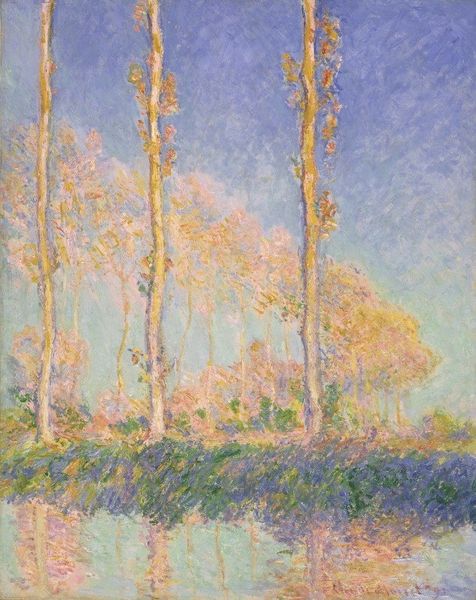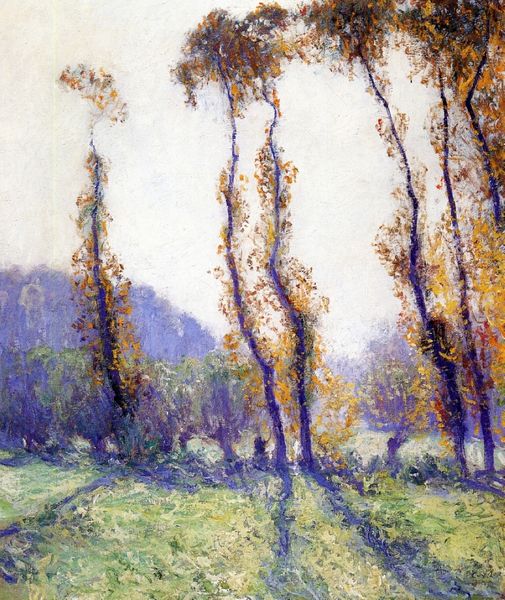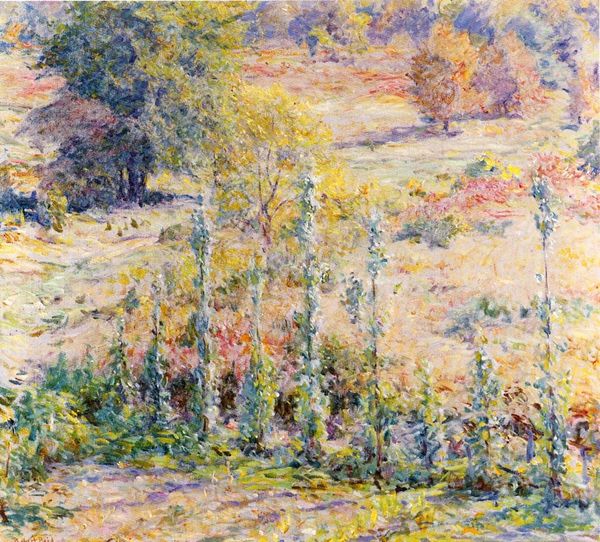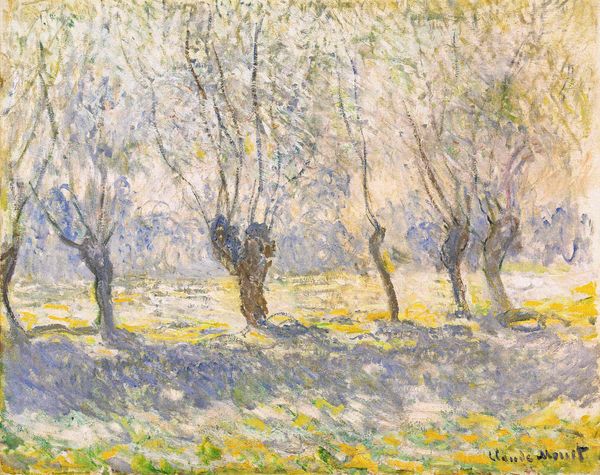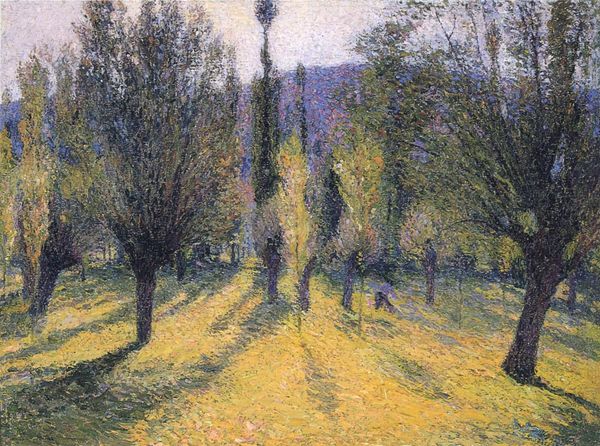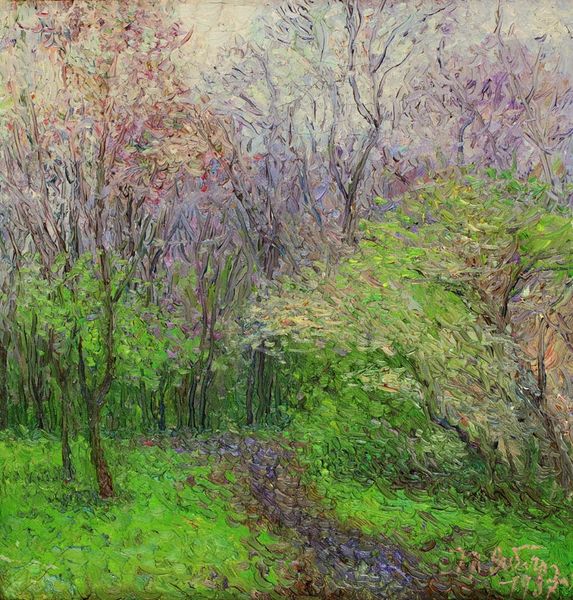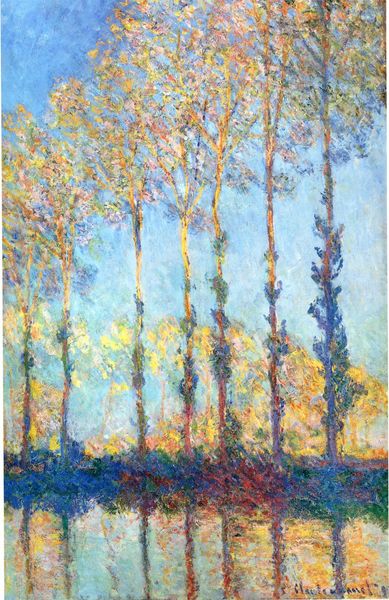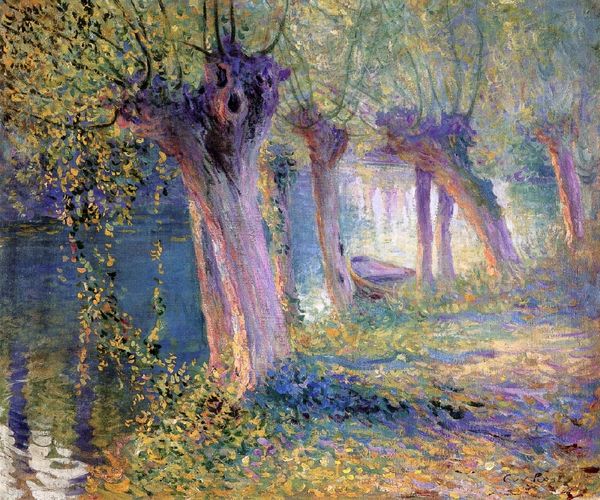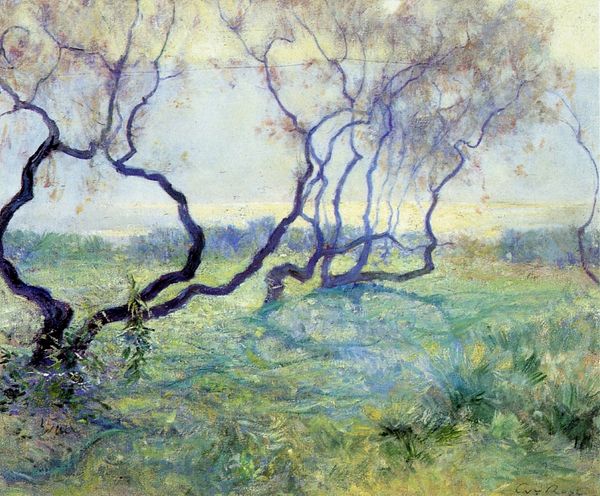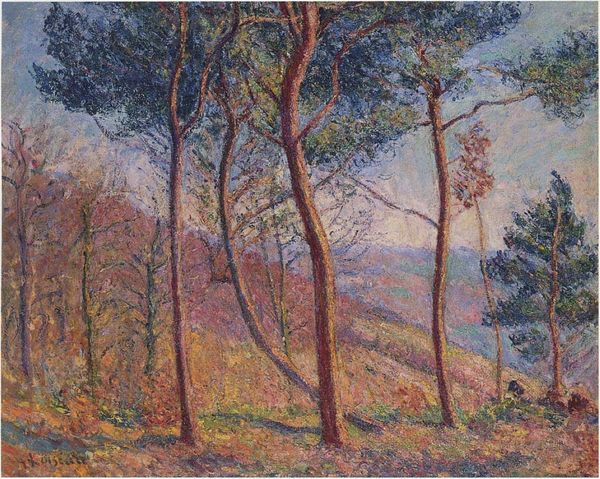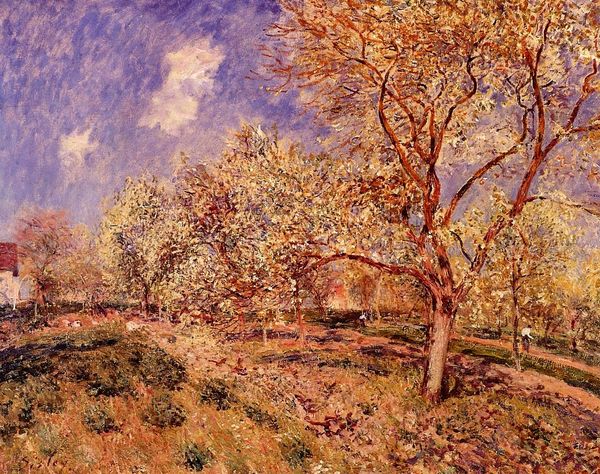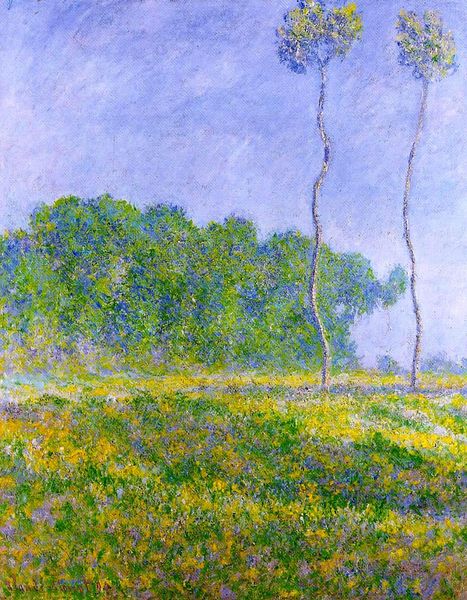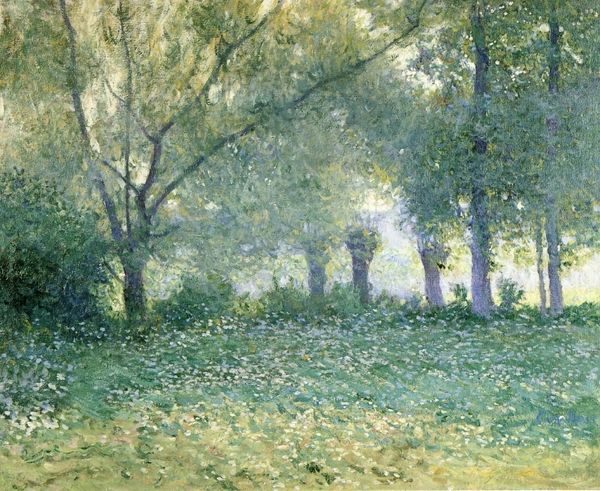
Copyright: Public domain
Editor: This is "Winter," painted by Gustave Loiseau in 1913. It's an oil painting, and I immediately notice the texture and the way the light filters through the trees. It feels both serene and a little melancholic. What stands out to you? Curator: Well, looking at the facture – the way Loiseau applied the oil paint – it speaks volumes. Notice the brushstrokes; short, broken, almost pointillist. This was a direct result of the industrial revolution and the mass production of pre-mixed paints in tubes. Artists no longer needed to grind their own pigments or be confined to a studio. "Plein-air" painting, facilitated by these advances, profoundly impacted how landscapes like this were captured and consumed. Editor: So, the shift to readily available paint literally changed the artistic process. I guess I never thought of it that way. How else does this influence the work? Curator: Consider also the social implications. The rise of a leisure class, enabled by industrial capitalism, created a demand for easily digestible, aesthetically pleasing landscapes like "Winter." These paintings became commodities, signs of status. The very materials and methods, from the canvas to the pigments, were intertwined with economic and social forces of the time. Think about the cost of the pigment and brush in 1913! How many people could purchase this artwork and support artists at this time? Editor: That’s a perspective I hadn’t considered. So, beyond the surface beauty, "Winter" tells a story about the changing art world shaped by industrial production and new economic structures. Curator: Precisely! The artistic choices were deeply connected to the means of production and distribution and to their financial constraints and feasibility of obtaining supplies. Editor: I’ll definitely look at Impressionist paintings differently now! The availability of art supplies shaped both production and its subsequent economic worth. Curator: Absolutely, analyzing the material conditions is key to a deeper appreciation of the art.
Comments
No comments
Be the first to comment and join the conversation on the ultimate creative platform.

